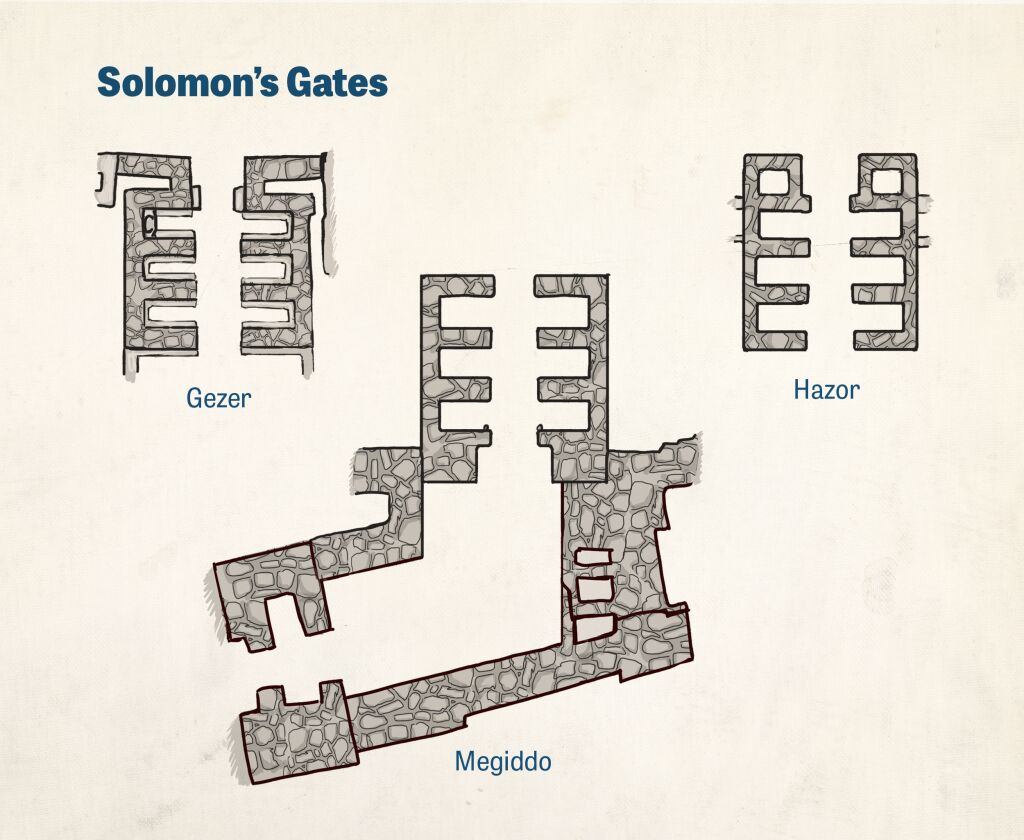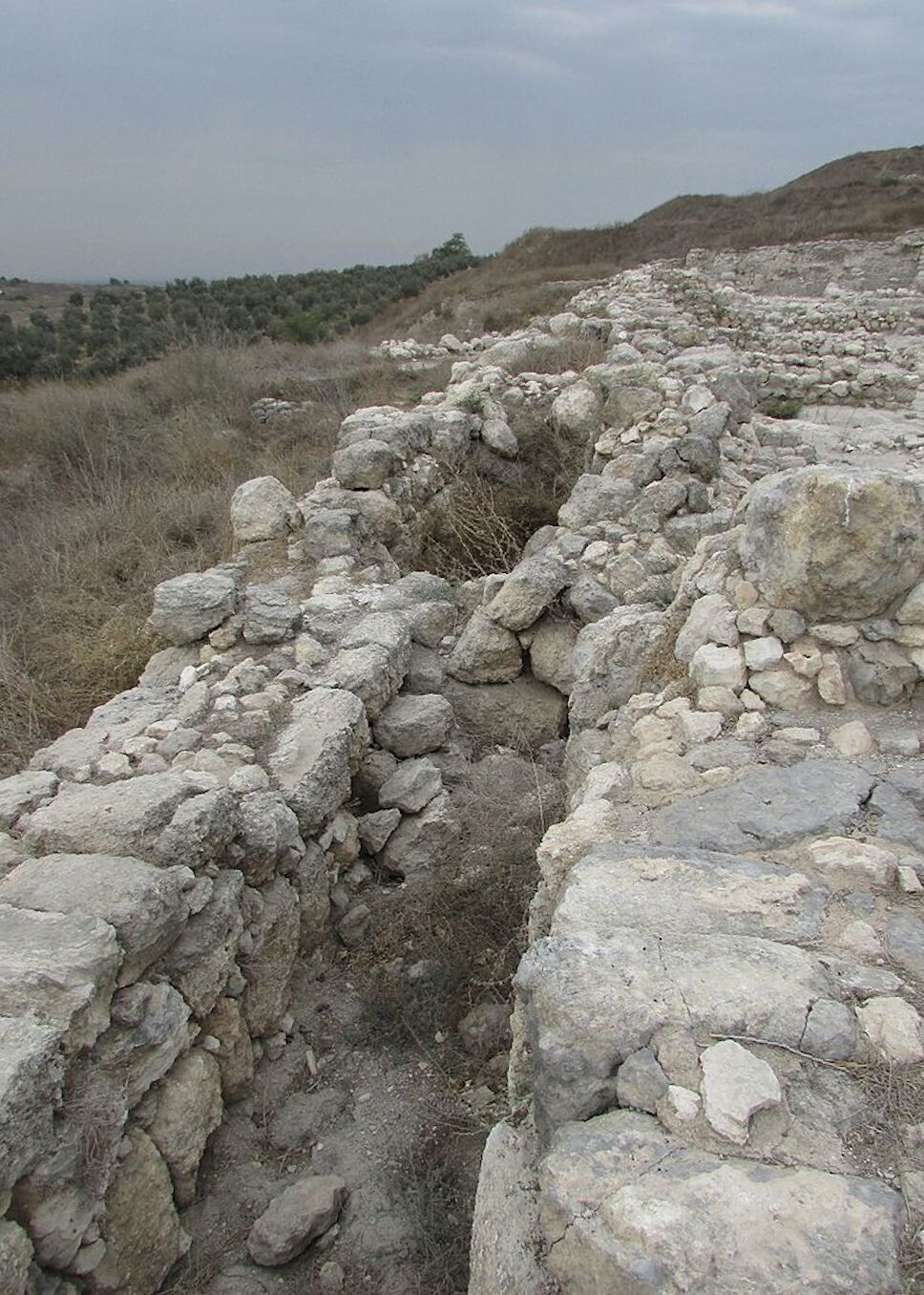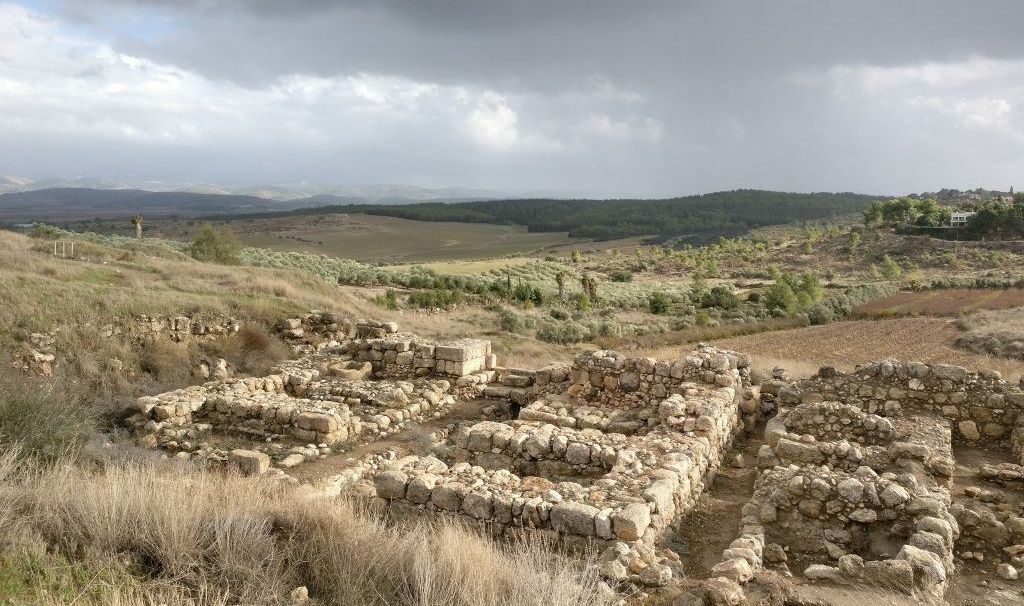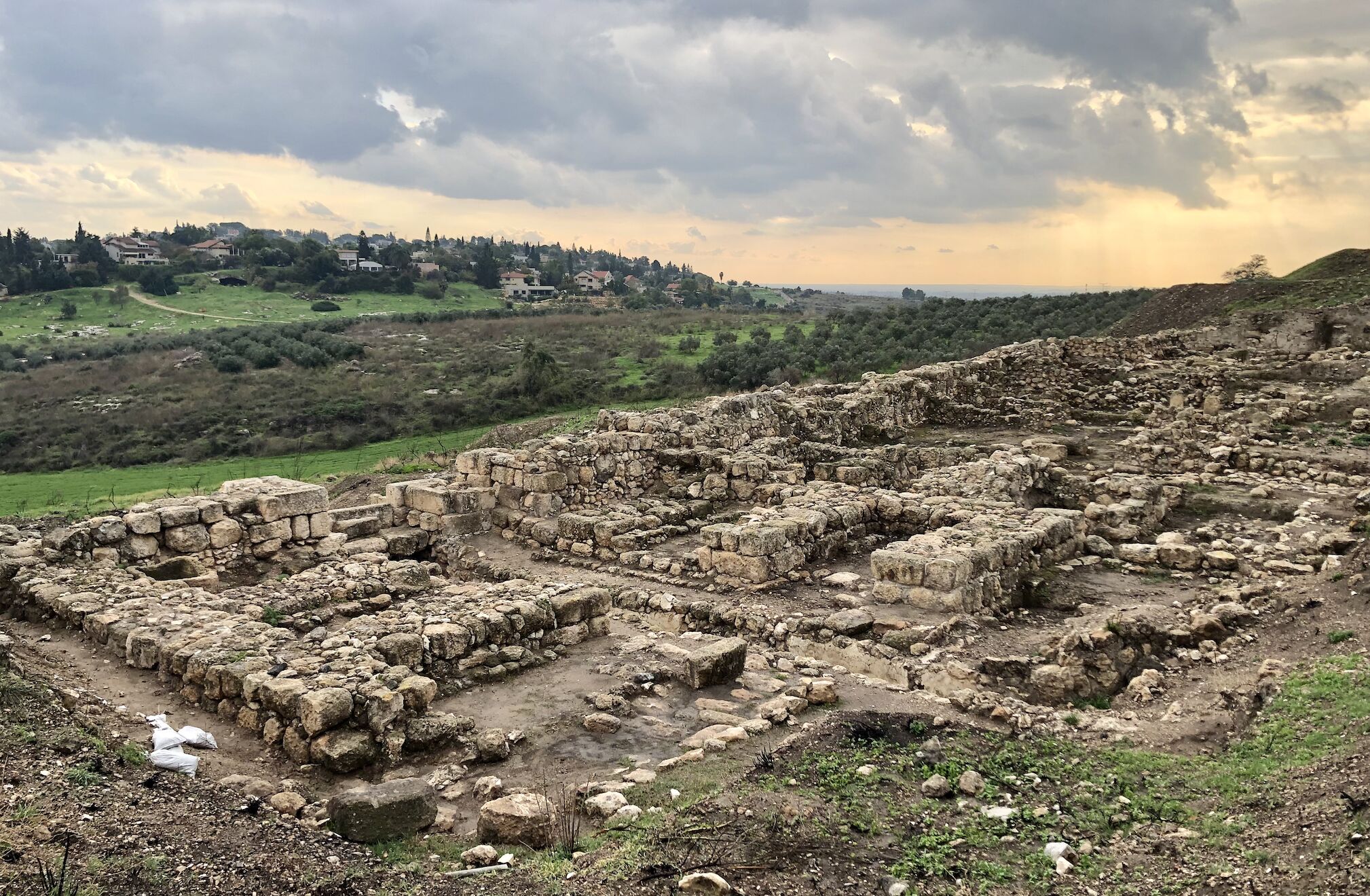In the battleground that is the debate over identifying the biblical King Solomon’s city of Gezer, there is one key term: Stratum 8. Does it belong to the high chronology’s 10th century b.c.e. (thus Solomonic)? Or does it belong to the low chronology’s ninth century b.c.e.?
Last week, a new, thorough radiocarbon chronology study of Gezer was published in the scientific journal PLOS ONE. The report, “The Chronology of Gezer From the End of the Late Bronze Age to Iron Age II: A Meeting Point for Radiocarbon, Archaeology, Egyptology and the Bible”—composed by Lyndelle Webster, Samuel Wolff, Steven Ortiz, Marcella Barbosa, Cameron Coyle, Gary Arbino, Michael Dee, Quan Hua and Geraldine Jacobsen—was the product of 10 seasons of excavations across more than a decade of field work by the Tandy Institute of Archaeology. And the results have proved remarkable.
“I wasn’t expecting these results,” Haaretz cites the lead author, Dr. Lyndelle Webster, as saying. “I was expecting later dates, similar to what we see in settlements further north. But something different is going on here that we can’t yet explain.”
Battleground: Stratum 8
Stratum 8 is the key layer at the site of Gezer traditionally associated with the biblical king. This association with King Solomon was first presented by the renowned archaeologist Prof. Yigael Yadin in 1958. This stratum contains a monumental six-chambered city gate, paralleling those found at Megiddo, Hazor and Jerusalem—and paralleling 1 Kings 9:15, which describes Solomon’s construction at these four sites: “And this is the account of the levy which king Solomon raised; to build … Jerusalem, and Hazor, and Megiddo, and Gezer.”

Gezer’s Stratum 8 features a sudden appearance of additional monumental architecture, including a 27-meter-long casemate wall fortification, stone glacis, a large courtyard-type administration building (19 by 12 meters, with at least 15 different attached rooms) and a monumental stairway (and all in the relatively limited part of the tel where excavations of this stratum have taken place).

Professor Yadin associated this material with the 10th century b.c.e., the time period of King Solomon. Later excavators, notably Prof. William Dever, returned for several seasons between the 1960s and ’90s. Their finds essentially corroborated Yadin’s original conclusions.
However, a minimalist camp later emerged, promoting a revised low chronology, seeking to down-date these “Solomonic” remains found at Gezer, Hazor and Megiddo to the ninth century b.c.e. Chief among this movement was Prof. Israel Finkelstein. Aiming to attribute these constructions to northern Israel’s Omride dynasty, he infamously concluded that the great biblical King Solomon was in reality nothing more than a glorified “hillbilly”—“little more than a hill country chieftain … rul[ing] over a marginal, isolated, rural region, with no signs of great wealth or centralized administration.” His rule “extended over no empire, no palatial cities, no spectacular capital” (The Bible Unearthed, pages 190, 238, 143). “The supposed archaeological evidence of the united monarchy was no more than wishful thinking,” he wrote of the early “Solomonic” discoveries at these respective sites (page 235).
The resulting debate turned explosive, particularly between Finkelstein and Dever. Dever doggedly maintained the 10th-century dating for Gezer’s Stratum 8, based on ceramic typology and select radiocarbon dating samples that were available. (Hazor’s excavator, the late Prof. Amnon Ben-Tor, subsequently reinvestigated his own site amid the fallout—and reasserted even more conclusively Yadin’s original dating.)
One shortcoming at Gezer, as explained by the recent report, was the fact that “only a few ad-hoc 14C [radiocarbon] measurements were available at Gezer for any stratum or period.” The new research changes that entirely.
Gezer’s ‘First Substantial Radiocarbon Dataset’
The new paper only deals partially with Stratum 8. In full, it presents “the first substantial radiocarbon dataset and Bayesian chronological analysis for Gezer spanning the last part of the Late Bronze Age through Iron Age ii.” It further compares the results of radiocarbon samples, stratum by stratum (specifically, Strata 6-12), with textual references to the city in Egyptian, Assyrian and biblical sources. Perhaps understandably, most of the reporting on the study has centered around Stratum 8.
Here’s what the radiocarbon samples revealed (emphasis added throughout):
The transformation of Gezer in Stratum 8 … likely began in the early part of the 10th century b.c.e. (998–957 b.c.e., 68.3 percent hpd). … Stratum 8 was used during the first part of the 10th century b.c.e., until its destruction near the middle of the century …. [T]he chronological position of this horizon is hard to dispute thanks to constraint provided by the overlying Stratum 7.
Stratum 7 … was used primarily during the later part of the 10th century b.c.e. It was not particularly long-lived, as the site once again fell prey to a destructive event near the close of the 10th century b.c.e. or early decades of the ninth century b.c.e. (927–885, 68.3 percent hpd).
The construction of Stratum 8 … likely occurred in the first part of the 10th century b.c.e. (Start 8: 998–957 b.c.e., 68.3 percent hpd [showing the tightest probability]; 1023–942 b.c.e., 95.4 percent hpd [including potential outlier samples]). The data and model—with constraints provided by overlying Stratum 7—rule out a ninth-century b.c.e. date for Stratum 8. … Stratum 8 came to an end already in the mid-10th century b.c.e.
So Long, Omri
The research paper makes no pretense of any biblical maximalism in its conclusions. Just the opposite: It remains intentionally ambiguous as to whom in the 10th century the construction should be attributed. And as stated by the lead author, the initial assumption was that the dates would turn out to fit the later schemes. The authors worked from the (debatable) assumption that “[t]he Egyptian and Assyrian texts are contemporary with the events they describe and thus generally accepted as describing real events …. The biblical texts were written centuries later and thus the historical realities behind them are less clear and more strongly debated.”
In response to the findings from Gezer, Lachish excavator Prof. Yosef Garfinkel noted that “some caution is needed,” given the sample sizes from Stratum 8. Indeed, the researchers note in their paper that “we would ideally like to have additional radiocarbon dates for Stratum 8.” Still, they point out the double-security of their conclusions—not only from their Stratum 8 carbon samples, but also from their plenteous Stratum 7 samples (from the layer built atop of, and thus closing out, Stratum 8), which dated to the latter part of the 10th century.
“Caution” appears to be the byword for this study. Ariel David wrote in “David and Solomon’s Biblical Kingdom May Have Existed After All, New Study Suggests”: “The authors of the study are cautious about interpreting their finding.” The authors themselves made statements such as: “These outcomes raise caution,” “we must cautiously compare,” “treated somewhat cautiously.” They added:
There is understandably some reservation among scholars about making connections between archaeological remains and events, processes or individuals in textual sources, particularly given the tendency of past scholarship to accept these correlations rather hastily and uncritically. Nonetheless, we must cautiously compare the different lines of evidence available to us, bearing in mind their limitations.
Just the same, the researchers are unequivocal in the results of their findings: Gezer’s Stratum 8 “cannot date beyond the first part of the 10th century b.c.e.” They write:
The 10th-century b.c.e., 14C-based date for early expansion in the Shephelah notably rules out an association with the northern Israelite Omride dynasty; however, it is chronologically compatible with Saul, David and/or Solomon, whose text-based dating (albeit approximate) falls in the 10th century b.c.e. (perhaps also the late 11th century b.c.e.). While scholars can debate the degree to which the accounts of these early highland rulers reflect historical memories, extra-biblical evidence indicates they were real historical figures ….
The Tandy excavation directors consider that the most logical historical reconstruction based on the archaeological remains and 14C dates is the westward expansion of a nascent Judah already in the 10th century b.c.e.
Unsurprisingly, Professor Finkelstein summarized this new study as “meaningless” and of “very little value,” arguing that the excavators did not show proof for their findings coming from clean Stratum 8 contexts. Naturally, the excavators took exception to this. “We took samples from good contexts,” objected Dr. Samuel Wolff.
Some debates die hard, and the most important and invested debates die the hardest.
Welcome back, Solomon.


